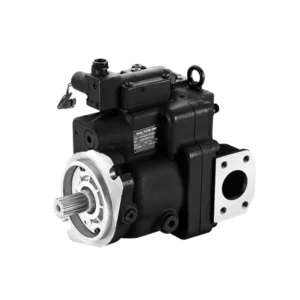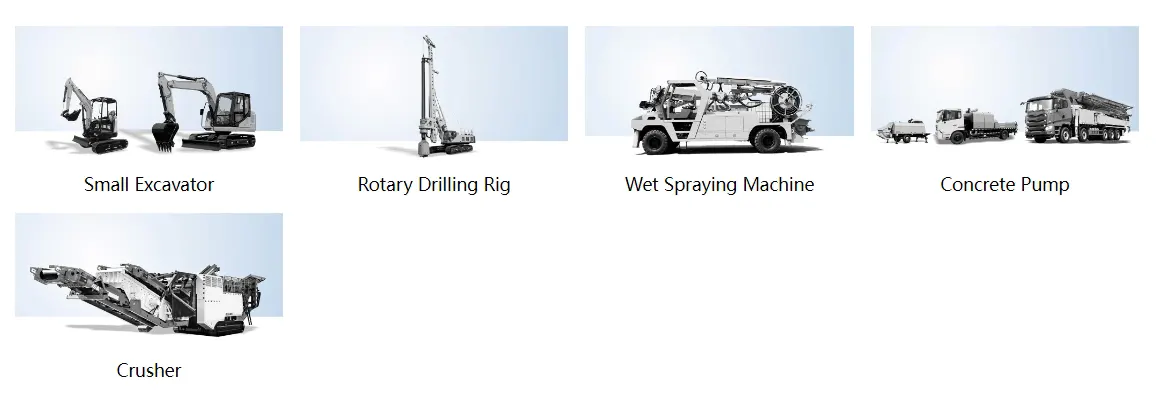HP3V Series Axial Piston Variable Displacement Hydraulic Pump
Jako jeden z producentów, dostawców i eksporterów produktów mechanicznych, oferujemy cylindry hydrauliczne i wiele innych produktów.
Prosimy o kontakt w celu uzyskania szczegółowych informacji.
Poczta:sales@hydraulic-cylinders.net
Producent dostawca eksporter siłowników hydraulicznych.
HP3V Series Axial Piston Variable Displacement Hydraulic Pump

The HP3V series axial piston variable displacement hydraulic pump is a game-changer in hydraulic systems. This pump is designed with precision engineering and cutting-edge technology and delivers superior efficiency and performance, making it an indispensable component for various industrial applications. This comprehensive article will explore the key characteristics, usage methods, and maintenance guidelines for the HP3V axial piston variable displacement hydraulic pump.
The HP3V series axial piston variable displacement hydraulic pump is a powerhouse that delivers unmatched efficiency and performance in hydraulic systems. With its variable displacement technology, compact design, and quiet operation, this pump is a reliable and precise solution for various industrial applications. By following the recommended usage methods and adhering to regular maintenance practices, the HP3V series pump will continue to provide exceptional performance, contributing to the success of various hydraulic systems. Embrace the power of efficiency and performance with the HP3V series axial piston variable displacement hydraulic pump and unlock the full potential of your hydraulic system.
HP3V Series Axial Piston Variable Displacement Hydraulic Pump Key Characteristics:
- Variable Displacement Technology: The HP3V series pump has advanced variable displacement technology, allowing it to adjust the output volume based on system requirements. This feature maximizes energy efficiency, reduces heat generation, and optimizes overall system performance.
- Unparalleled Efficiency: The HP3V series pump achieves exceptional efficiency with its innovative axial piston design. It provides precise hydraulic power, ensuring smooth operation and enabling the handling of high-pressure applications with ease.
- Compact Design: The pump’s compact design optimizes space utilization in hydraulic systems. Its small footprint enables easy integration, even in tight spaces, without compromising performance or functionality.
- Quiet Operation: Noise reduction features incorporated into the HP3V series pump ensure quiet operation in diverse industrial environments. This characteristic is precious in applications that require low noise levels, promoting a comfortable and productive work environment.
HP3V Series Axial Piston Variable Displacement Hydraulic Pump Parameter:
| Size | Displacement cc/rev | Pressure bar | Rotation speed r/min | ||
| Rated | Peak | Max for self-priming*1 | Max*2 | ||
| HP3V80 | 80 | 320 | 350 | 2400 | 3000 |
| HP3V140 | 140 | 350 | 400 | 2150 | 2500 |
HP3V Series Axial Piston Variable Displacement Hydraulic Pump Advantages:
• Applied in open circuit medium and high pressure applications
• High continuous pressure
• Good self-priming properties
• High reliability
• High power to weight ratio
• Multiple control methods
• Fast response
• Low pressure pulse
HP3V Series Axial Piston Variable Displacement Hydraulic Pump Application:

Usage Method Of HP3V Series Axial Piston Variable Displacement Hydraulic Pump:
- Pump Installation: Install the HP3V series axial piston variable displacement hydraulic pump in the designated location within the hydraulic system. Refer to the manufacturer’s guidelines and specifications for proper alignment and secure attachment to the system’s structure using suitable mounting brackets or accessories.
- Hydraulic System Integration: Connect the pump to the hydraulic system using compatible hoses, fittings, and valves. Ensure all connections are secure, leak-free, and correctly tightened to guarantee optimal hydraulic performance.
- Fluid Compatibility: Verify that the hydraulic fluid used in the system is compatible with the HP3V series pump. Refer to the manufacturer’s recommendations for the appropriate fluid type, viscosity, and temperature range. Regularly monitor and maintain the hydraulic fluid to ensure proper pump operation and longevity.
- Operational Parameters: Familiarize yourself with the pump’s control options and adjust the operating parameters according to the specific requirements of the hydraulic system. Monitor and change the pump’s displacement settings to optimize performance and energy efficiency.
How To Remove Hydraulic Cylinder End Cap?
To remove the end cap of a hydraulic cylinder, follow these steps:
- Prepare for the Task:
- Ensure the hydraulic system is depressurized and disconnected.
- Clean the exterior of the cylinder to prevent debris from entering during the process.
- Place the cylinder on a stable work surface and secure it using clamps or a vise.
- Identify Retaining Mechanisms:
- Inspect the cylinder to determine the retaining mechanism used on the end cap. It could be bolts, threaded connections, snap rings, or retaining rings.
- Remove Bolts or Fasteners:
- If the end cap is secured with bolts, use an appropriate wrench or socket to loosen and remove them.
- Ensure you have suitable access to all the bolts and remove them evenly, avoiding any damage to the cylinder or end cap.
- Loosen Threaded Connections:
- For threaded connections, use a wrench or spanner to loosen the relationship between the end cap and the cylinder body.
- Apply gentle but consistent force in a counterclockwise direction to loosen the threads.
- Once loosened, continue turning the end cap by hand until it can be entirely removed.
- Remove Snap Rings or Retaining Rings:
- If the end cap is secured with snap rings or retaining rings, use snap ring pliers or retaining ring pliers to remove the rings carefully.
- Insert the pliers into the ring’s ends and squeeze the handles to compress the ring, allowing it to be pulled out of its groove.
- Take caution not to damage the cylinder or end cap during this process.
- Separate the End Cap:
- Once all retaining mechanisms are removed, gently tap the end cap with a rubber mallet or a soft-faced hammer to loosen it from the cylinder body.
- Apply even force around the circumference of the end cap to prevent it from binding or becoming stuck.
- Inspect and Clean:
- Once the end cap is removed, inspect the sealing surfaces, O-rings, and internal components for any damage or wear.
- Clean the end cap, cylinder body, and all related components using a lint-free cloth or a suitable solvent to remove any contaminants or debris.
Możliwości i pojemność fabryki:
(1) Montaż
Dysponujemy najwyższej klasy niezależną platformą badawczo-rozwojową. Warsztat produkcji siłowników hydraulicznych posiada cztery półautomatyczne linie montażowe siłowników podnoszących i jedną automatyczną linię montażową siłowników przechyłu, o projektowanej rocznej zdolności produkcyjnej 1 miliona sztuk. Specjalny warsztat cylindrów jest wyposażony w różne specyfikacje półautomatycznego systemu montażu czyszczącego o projektowanej rocznej zdolności produkcyjnej 200 000 i wyposażony w słynny sprzęt do obróbki CNC, centrum obróbcze, specjalny sprzęt do precyzyjnej obróbki cylindrów, robot spawalniczy, automatyczna maszyna czyszcząca, automatyczna maszyna do montażu cylindrów i automatyczna linia produkcyjna do malowania. Istniejący krytyczny sprzęt składa się z ponad 300 zestawów. Optymalna alokacja i efektywne wykorzystanie zasobów sprzętowych zapewniają wymagania dotyczące dokładności produktów i spełniają potrzeby wysokiej jakości produktów.


(2) Obróbka
Warsztat obróbki skrawaniem jest wyposażony w niestandardowe centrum tokarskie z pochyloną szyną, centrum obróbcze, szybkobieżną honownicę, robota spawalniczego i inny powiązany sprzęt, który może obsługiwać przetwarzanie rur cylindrycznych o maksymalnej średnicy wewnętrznej 400 mm i maksymalnej długości 6 metrów.

(3) Spawanie

(4) Malowanie i powlekanie
Z małymi i średnimi automatycznymi liniami do powlekania farbami na bazie wody, w celu osiągnięcia automatycznego załadunku i rozładunku robota oraz automatycznego natryskiwania, wydajność projektowa 4000 sztuk na zmianę;
Posiadamy również półautomatyczną linię do produkcji farb do dużych cylindrów napędzaną łańcuchem napędowym, o wydajności 60 skrzyń na zmianę.


(5) Testowanie
Dysponujemy najwyższej klasy urządzeniami kontrolnymi i stanowiskami testowymi, aby zapewnić, że wydajność cylindra spełnia wymagania.

We are one of the best hydraulic cylinder manufacturers. We can offer comprehensive hydraulic cylinders. We also provide corresponding przekładnie rolnicze. Eksportowaliśmy nasze produkty do klientów na całym świecie i zdobyliśmy dobrą reputację dzięki najwyższej jakości produktów i usług posprzedażnych. Zapraszamy klientów w kraju i za granicą do kontaktu z nami w celu negocjacji biznesowych, wymiany informacji i współpracować z nami!
Zapraszamy na wycieczkę po naszej fabryce VR:
Wybierz się na wycieczkę po naszej fabryce VR z następującymi elementami
Siłownik hydrauliczny Zastosowanie:


